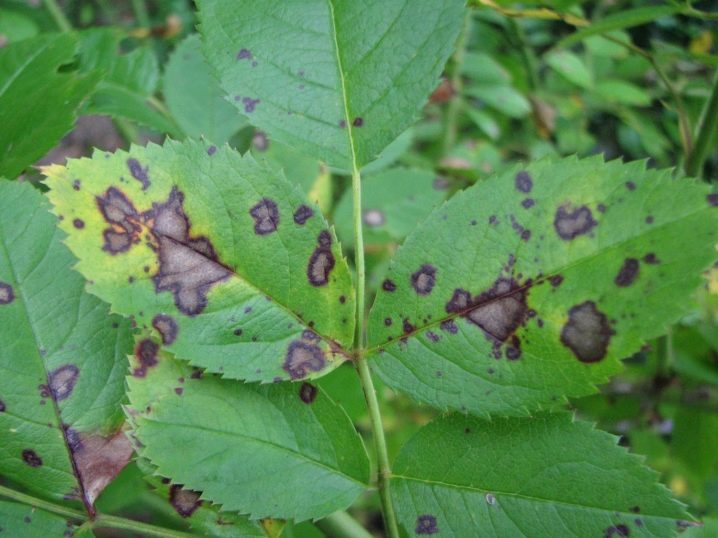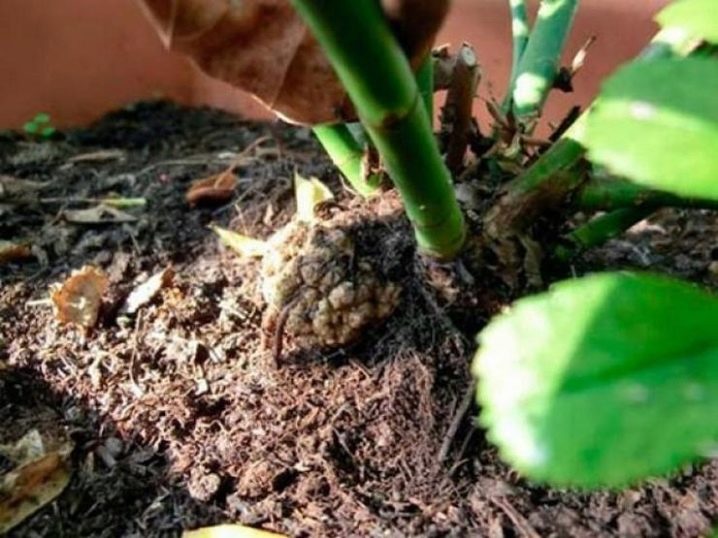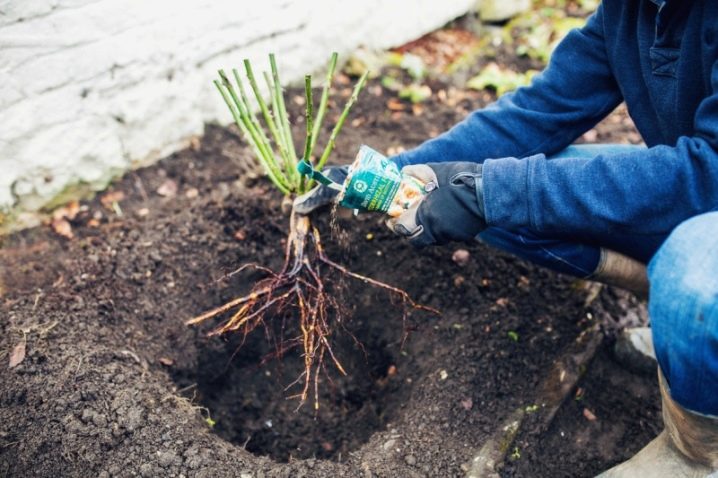How to care for park roses
How to water properly
The rose loves water, so you need to water abundantly 2-3 times a week.
It is important that the earth is soaked deeply, so it is better less often and more abundantly than a little every day. You should be guided by the weather: the soil should be constantly slightly damp
By the end of summer, watering is stopped, the roses should start preparing for wintering and stop growing young shoots.
How to feed
You will have to feed from the second year after planting, when the organic matter in the soil will gradually be used. You can use organic fertilizers or special complex fertilizers for roses. They are inexpensive, and when foliar top dressing is carried out on the leaves, they give an amazing result. It is advisable to feed it 1-2 times a month. The procedure is very simple and does not take much time, and the flowering will increase immediately.
Diseases and pests
Hardy Canadians are not prone to disease, but black spot still sometimes affects them. To prevent this from happening, during the growing season, plants are sprayed with copper-containing preparations. If the leaves are nevertheless covered with spots, it is worth spraying the roses with the preparation Skor. Affected foliage must be burned in the fall.
For insects such as aphids, thrips or ticks, insecticides such as Actellic and Fufanon will help. The main thing is to carefully follow the norms specified in the instructions for use.
Rose lovers who do not have the time and desire to "mess around" a lot with their pets should definitely take a closer look at the varieties of Canadian selection. Hardy and unpretentious flowers will delight with their beauty throughout the summer without causing unnecessary trouble.
Teresa Bagnet is a Canadian-bred park bush rose, bred in 1950. The variety is distinguished by large flowers with a pleasant aroma. Rosa Teresa Bagnet belongs to the early flowering varieties.
Preparation before planting a Canadian rose
Planting a Canadian rose is no different from other varieties of this beautiful flower, it consists in the simplest actions and manipulations that do not require additional skills. However, many gardeners are still afraid and do not risk ordering seedlings of this beautiful flower, not knowing all the nuances of growing a plant. Although everything is elementary here, the main thing is to correctly carry out the preparatory work, which should consist in the selection and acquisition of high-quality planting material, as well as the selection of an ideal place for planting.
Stage 1. Selection of a variety and seedling of a Canadian rose
- The work on planting a Canadian rose should begin with the selection of the variety you need. Today there is a wide variety of the most unusual and spectacular varieties of the Canadian rose, which belong to the Canadian selection, American and other developments. The best option would be to purchase varieties of roses, the varieties of which were developed in Canada. It is these flowers that are distinguished by the best frost resistance.
- You can buy a Canadian rose online directly from the homeland of these beautiful flowers; a few varieties of this species can be purchased in nurseries and garden centers. But if you want to get hold of the rarest varieties, you have to use the Internet.
- You should not chase cheap prices and buy seedlings near roads or in spontaneous markets, since these flowers have not yet spread en masse in Russia and you can buy not exactly what you wanted.
- If you buy a seedling from a specialized garden center or nursery, be sure to inspect it carefully.There should be no visible damage or traces of rot on the shoots and root system. Also, there should be no signs of disease or traces of the presence of pests.
- The seedling must be grafted.
- Depending on the time of purchase of a Canadian rose seedling, it can be with an open root system or with a closed one. Seedlings in a container can be planted at any time.

Stage 2. Choosing a place for planting a Canadian rose
Canadian roses are distinguished by their unpretentiousness and can grow and bloom beautifully anywhere.
However, to get a beautiful, lush bush with an abundance of flowers on it, it is important to find the most suitable place. First of all, the selected area should be sunny and open, although a slight partial shade is acceptable when growing a Canadian rose in the open field.
Direct sunlight should not constantly fall on the rose bush. Since the Canadian rose is not very fond of transplanting, the place must be chosen carefully. The place you choose should be well ventilated. Canadian roses can be used to create beautiful hedges, for weaving arbors and arches, for creating boles and for decorating flower beds and garden compositions
They look great with other flowering plants.
Stage 3. Selection and preparation of soil for planting a Canadian rose
Roses of this variety prefer to grow on fertile and nutritious soils.
It is also important that the soil at the landing site is loose and light with a neutral or slightly acidic reaction. Good drainage is also important, as the roots can suffer from prolonged stagnation of water.
Some time before planting the Canadian rose in the open ground, it is recommended to prepare the soil in the place of your choice. To do this, you need to remove all the weeds and carefully dig up the place, about 2 bayonets of a shovel
At this time, it is important to add humus, peat, wood ash and complex mineral fertilizers to the soil
Flower propagation
This variety takes root with great difficulty. It is also impossible to get seedlings from seeds. The best way to propagate a plant is to root its layers.
It is better to lay layers in late spring. Over the summer, they will have time to put down roots and winter well, covered with spruce branches. With the onset of the new season, they are separated from the mother bush and transplanted.
A strong flexible shoot is chosen for rooting. Dig a longitudinal groove 10 cm deep near the bush and put a whip into it. At the same time, make sure that 1-2 kidneys are at the bottom and the same number at the top. The lash is pinned, sprinkled with soil and regularly moistened during the summer.
Diseases and pests
Despite the fact that the Canadian rose is extremely resistant to diseases, it requires certain measures to prevent them. If the gardener noticed negative signs, then it is worthwhile to carry out the treatment as soon as possible. The most common among such roses are 4 types of diseases.
Powdery mildew. With this disease, a characteristic white bloom appears on the leaves. Some leaf deformation is also observed. For the treatment of powdery mildew, the bushes should be sprayed with special agents, for example, Topaz, Chistotsvet, Fundozol and others. The procedure can be repeated if necessary.

Rust. With such an ailment, a modification of the shoots is observed. To protect plants from this disease, excess nitrogenous fertilizers and excessive moisture should be avoided whenever possible. The land under the bushes must be loosened, and the fallen and affected leaves must be burned.

Black spot. This disease involves the formation of black spots on the leaves. To avoid infection, you should follow simple rules. First of all, this is the observance of all the rules of agricultural technology.
Destruction of fallen leaves is also important. And, of course, do not forget to spray the plants with specialized preparations, which must include copper.

Bacterial cancer.This is a very dangerous disease, in the presence of which dark growths are formed on the plant. As a rule, bacterial cancer develops with high humidity and root damage. If the plant has a damaged root collar, it should be destroyed. Neoplasms on the lateral roots must be cut off and burned.
Also, for treatment, you can use a 1% solution of copper sulfate - the cut roots must be immersed in it for 5 minutes.

How to plant a park rose
When to plant
Autumn planting is preferable, so the bushes take root better and in spring they already begin to bloom. When planting in autumn, a park rose is immediately spud. It is also possible to plant in the spring, but the bushes planted in the spring will noticeably lag behind the autumn ones.
How to plant correctly
To prevent a park rose from freezing in winter, it must be slightly deepened when planting below ground level: the grafting site should be covered with a layer of earth of 8-12 cm.This measure will protect the grafting site from premature aging and peeling of the bark, and also stimulate the growth of young shoots. A properly planted rose will stay healthy for a long time without expelling wild rose hips.
When planting a hedge, leave a larger distance between the bushes, about 80-100 cm, and for bushes above a meter - 1.2-1.5 m.If you plant individual bushes in a flower bed, keep a distance of 1.5-3 m. varieties are planted according to the scheme 50x50 - 70x70 cm.
- The planting pit is made spacious, up to 60 cm in diameter, 40-50 cm in depth. Garden soil can be mixed in half with humus to lay the foundation for future lush blooms. It is also good to add a handful of wood ash to the ground when planting.
- A seedling with a closed root system is simply rolled over, filling up the earth.
- If the root system is open (rose out of the box), examine the roots well so that there are no rotten ones. Cut off all suspicious parts of the root. Plant with roots spread out so they don't bend. It is better to make a mound and spread the roots of the rose on it. Top up and level the ground, press lightly.
- Water abundantly, in a bucket of water under the bush.
- After watering, it is better to mulch the soil in order to retain moisture for longer and create a microclimate in the soil that favors the reproduction of beneficial microorganisms and earthworms.
In the future, it will be enough to keep the soil moist by watering the roses in the morning or in the evening abundantly at the root.
Pruning and covering park roses for the winter
A park rose is cut minimally, cutting out only old, damaged or frozen branches. After flowering, the faded buds are cut off. Pruning is completely stopped in August. In autumn, the branches are freed from the leaves, bent down, pinned with metal staples and covered. Especially powerful bushes are difficult to bend to the ground, then you will need to dig them up on one side until the root begins to bend and tilt the bush. The root collar must be piled up to a height of 20-30 cm. The rose is covered with spruce branches from above; non-woven material can be used. The main condition is that the shelter breathes, and the branches do not come out in wet, damp weather.
In the spring, when the snow melts, the structure is dismantled, straightening the bush before the start of sap flow. Old 4-5-year-old branches are cut at the root. It is advisable to process the cut points with garden pitch so that the rose does not get sick. Young branches are not cut. The remaining branches can be cut into two buds so that the shoots on them are more powerful. Make sure that when pruning, all the upper buds look outward of the bush, and not inward.
How to prepare roses for wintering, the video will tell:
Properly covered for the winter, park roses will delight the owners with a lush flowering waterfall. It is worth trying for such splendor!
Rose J.P. Connell: description and characteristics
JP Connell, part of the Explorer series, was bred in 1987. An adult bush, consisting of strong, straight shoots, grows up to 1.5 m in height and width. The flowers are large, cream-colored with a lemon-yellow core, combined into inflorescences of 5-7 pcs. The aroma is light, unobtrusive.

J.P. Connell's creamy yellow lush flowers are gorgeous
Note! Among the advantages of the variety, flower growers note increased resistance to various diseases and excellent frost resistance. However, if agricultural technology is violated, this rose can cause a lot of trouble.
J. P. Connell is designed for zoning, hedging, flowering galleries and terraces. Landscape design specialists often use it in group garden compositions.
Description of the rose G.P. Connell
Park rose J.P. Connell was bred in 1987. It belongs to the Canadian type of roses, the Explorer series. Many roses from this series were obtained as a result of selection experiments.
What does a Canadian park rose look like?
Canada is a northern country, so thorny plants can be cultivated in unfavorable climates. Roses tolerate all negative weather fluctuations perfectly. Rose Jay can be planted separately in flower beds or alpine slides in the vicinity of other garden varieties.
For your information! Canadian representatives are suitable for creating living flowering hedges or colorful arches.
An adult bush of J.P. Connell reaches a height of one and a half meters, about the same width of the bush, straight shoots without thorns. The rose blooms in two waves: first, several brushes of roses bloom, on which 5-7 large flowers are lemon-yellow. They may fade to a creamy tone, but retain the yellow color of the central petals. Demonstrating its charm, the bush in an instant dissolves many buds that exude a light aroma. In place of faded roses, seed boxes appear that look spectacular.
Note! If the seed pods are removed in time, the flower will bloom one more time.
How to properly plant in open ground and grow a flower
When landing "Canadians" you should adhere to certain rules. You can get a healthy plant only by purchasing high-quality planting material in a proven garden site.
Roses of this variety are planted only in the form of seedlings. They can have an open or closed root system. In the latter case, the plants tolerate transportation and transplanting better.
Important! Seedlings with open roots are planted in May when the ground warms up. The container plant can be moved outdoors throughout the season
The main thing is that the flower is not threatened by frost in the first 3-4 weeks, then it will have time to adapt.
Seat selection
The J. P. Connell site should be sunny but slightly shaded during the hot afternoon hours. It is good if it is located on a small hill. Do not unnecessarily block the bush from the wind.

J.P. prefers free air circulation
How to prepare the soil and flower for planting
Roses need light loose soil, so the soil is dug up and drained in advance with river sand. It is also advisable to increase the nutritional value of the soil by introducing humus, ash and minerals.
Note! The day before planting, the seedling is placed in a growth stimulator solution. Before that, the roots and the top are cut off, sprinkling the cuts with crushed coal
Planting procedure step by step
The planting of park roses is carried out in a certain sequence. They act like this:
- Dig a landing hole 60 × 60 cm deep in 2 shovel bayonets.
- A drainage layer of broken brick is laid on the bottom, and earth is sprinkled on top of it.
- A rose seedling is placed in a hole, the roots are carefully straightened.
- The pit is filled up, compacting the soil.
- The plant is watered with settled water.
After completing the planting, the ground around the flower is mulched.
General landing rules
The main thing to consider when planting a Canadian rose is its love for sunny places. It is recommended to stop your choice in well-ventilated and well-lit areas.
The first step is to prepare a pit for planting. Acceptable size - 70x70 centimeters.The prepared place should be covered with fertile non-acidic soil, as well as humus, peat and additional fertilizers. If the bush is grafted, then it is better to plant it to a depth of 5-10 centimeters. This distance will allow the root system to develop fully.

With the creation of a hedge, the gardener will have a little more difficulty. To do this, you need to perform several important steps.
For pruning cuttings, it is recommended to choose healthy annual shoots that are at least 20 centimeters long.
- All leaves are removed, except for two, located at the very top.
- Then the cuttings should be planted in the prepared trench, deepening them to the first leaf.
- The distance between the cuttings should be calculated based on the height of the future bushes - it should be exactly half of this figure.
- As soon as the plants are planted, they should be covered with transparent plastic bottles, and also shaded with grass a little. So they need to be left for the whole winter.

Diseases, pests and ways to control them
Despite the declared resistance to various diseases, in climates with high air humidity, J. P. Connell may undergo black spot. As a preventive measure, it is recommended to carry out spring spraying with Bordeaux liquid.
Important! Of the pests, the spider mite is a danger. You can fight it with the help of insecticides Aktara or Fitoverm

A healthy plant blooms profusely and almost continuously
The J. P. Connell Canadian rose is known for its unpretentiousness and ease of care. By giving it very little attention and care, you can get a perennial plant of stunning beauty.
vote
Article Rating
Classification of park roses
Park roses are classified according to the principle of flowering rate:
- Blooming once
- Re-blooming
Once flowering varieties are categorically impossible to cut off, because they can bloom only on last year's shoots. However, this is their advantage: the branches do not require bending, they winter well without shelter. This is a group of vintage roses that are cultivated rose hips. Among them, the most common varieties are Wasagaming, Minette, Poppius.
Re-blooming park roses, in turn, are further subdivided into subgroups:
- Frost-resistant hybrids, rugoses
- Frost-resistant Canadian park roses, wintering without shelter, subject to agricultural technology
- A group that does not hibernate without shelter, and requires bending of branches
Rugoses delight with their frost resistance, however, they cannot boast of a variety of shapes and colors, remotely resembling each other. Some hybrids are beautiful, but require shelter for the winter.
The Canadian rose group has gained particular popularity, the most prominent representatives being the Morden Centennial and Prairie Joy varieties.
Among the covering varieties, there is a huge variety of shapes and colors. One cannot fail to note the work of the English breeder David Austin, who presented the world with the Fisherman's Friend variety of covering park roses, enchanting with its unique beauty. Popular varieties of work of breeders Meiyana, Cordes, Tantau. This group also includes old remontant and Bourbon varieties.
Ideas for modern landscape design
As you know, Canadian roses are often used in landscape design. Experts identify several options for decorating a garden with this type of flowers.
- Rose hedges. For such hedges, it is best to purchase tall plants. To make the hedge bloom all year round and at the same time look beautiful, it is best to plant varieties of park roses. All plants must be of the same height. Roses will look amazing when planted against the backdrop of green bushes.
- Curbs. Miniature roses are used to create borders. It is desirable that all planted flowers are of the same shade.
- Flower beds. It all depends on the personal taste of the owners, so roses can be of any size, variety and color.However, it is best to use plants that are not too tall to form the perfect flower bed.
- Geometric compositions. Roses with large buds are suitable for creating spectacular sculptures. Varieties and shades can be chosen for every taste, there are no special rules.
- Arches. Exceptionally climbing roses with small or large flowers are suitable for decorating arches.

The following video will tell you about the best varieties of Canadian roses and their advantages.


